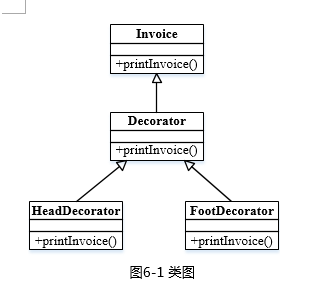现有: class Pencil { public void write (String content){ System.out.println( "Write",+content){ } }class RubberPencil extends Pencil{ public void write (String content){ System.out.println("Rubber Write"+content); } public void
题目
现有: class Pencil { public void write (String content){ System.out.println( "Write",+content){ } }class RubberPencil extends Pencil{ public void write (String content){ System.out.println("Rubber Write"+content); } public void erase (String content)}} 执行下列代码的结果是哪项?() Pencil pen=new Pencil(); (( RubberPencil) pen).write( "Hello");
- A、Write Hello
- B、Rubber Write Hello
- C、编译失败
- D、运行时抛出异常
相似问题和答案
第1题:
interface A{
int x = 0;
}
class B{
int x =1;
}
class C extends B implements A {
public void pX(){
System.out.println(x);
}
public static void main(String[] args) {
new C().pX();
}
}
错误。在编译时会发生错误(错误描述不同的JVM 有不同的信息,意思就是未明确的
x 调用,两个x 都匹配(就象在同时import java.util 和java.sql 两个包时直接声明Date 一样)。
对于父类的变量,可以用super.x 来明确,而接口的属性默认隐含为 public static final.所以可
以通过A.x 来明确。
第2题:
设有类定义如下:
class InOut{
String s= new String("Between");
public void amethod(final int iArgs){
int iam;
class Bicycle{
public void sayHello(){
//Here
}
}
}
public void another(){
int iOther;
}
}
以下哪些语句可以安排在//Here处 ?
A. System.out.println(s);
B.System.out.println(iOther);
C. System.out.println(iam);
D. System.out.println(iArgs);
第3题:
阅读下列代码段,选出该代码段的正确文件名( )。 class A { void methodl() { System.out.println("methodl in class A"); } } public class B { void method2() { System.out.println("method2 in class B"); } public static void main(String args[]) { System.out.println("main in class B"); } }
A.A.java
B.A.class
C.B.class
D.B.java
解析:Java源程序文件是以.java为后缀的,Java字节码文件以.class为后缀,而且 Java源文件中只能有一个public类,该类的名字为源文件名,程序段中类B是以public修饰的,因此源程序文件名为B.java。
第4题:
class MyThread extends Thread { public void run() { System.out.println(“AAA”); } public void run(Runnable r) { System.out.println(“BBB”); } public static void main(String[] args) { new Thread(new MyThread()).start(); } } What is the result?()
- A、 AAA
- B、 BBB
- C、 Compilation fails.
- D、 The code runs with no output.
正确答案:A
第5题:

【java代码】 class invoice{ public void printInvoice(){: System.out.println("This is the content of the invoice!"); } } class Decorator:extends Invoice{ protected Invoice ticket; public Decorator(lnvoice t){ ticket=t; } public void printinvoice(){ if(ticket!=NULL) (1); } } class FootDecorator extends Decorator{ public FootDecorator(lnvoice t){ super(t); } public void printinvoice(){ Systent.out.println("This is the header of the invoice!"); (2); } } class FootDecorator extends Decorator{ public FootDecorator(invoice t):{ super(t); } public void printlnvoice(){ (3); Systent.out.println("This is the header of the invoice!"); } } Class test{ public static void main(string[]args){ Invoice t=new invioce(); Invoice ticket; Ticket=(4); Ticket.Printinvoice(); Systent.out.println(“--------------“) Ticket=(5); Ticket.Printinvoice(); } } 程序的输出结果为: This is the header of the invoice! This is the content of the invoice! This is the footnote of the invoice! ---------------------------- This is the header of the invoice! This is the footnote of the invoice!
【解析】
试题分析
本题考查的是面向对象程序设计和设计模式。本题涉及的设计模式是装饰模式。装饰模式(Decorator) :动态地给一个对象添加一些额外的职责。它提供了用子类打展功能的一个灵活的替代,比派生一个子类更加灵活。
对于程序填空可以参照代码上下文、题干说明和设计模式综合考虑。
对于第(1) 空,是对printInvoice方法的具体调用,在Decorator是 装饰类,继承了Invoice发票类。此处需要填写的是printInvoice方法的方法体,根据Decorator类的上下文,已定义ticket对象,所以此处调用printinvoice方法的是ticket,第(1) 空填写ticket printlnvoice()。
对于第(2) (3) 空,根据类图可知,分别是HeadDecorator抬头 类、FootDecorator脚注类调用printInvoice方法的方法体,由于在这两个类中并没有定义属性,只有借助其超类的构造函数,所以这两个地方调用printlnvoice方法的是它们的超类,即(2) (3) 填写的是super.printInvoice()。
对于第(4) (5) 空,考查的是对装饰模式的调用,都是main函数中实例化的过程,根据输出结果可以看到,第(4)空实例化ticket对象,可以输出抬头、内容、脚注3个部分, 因此需要调用三者的printInvoice()方法, 前面已经实例化了一个Invoice对象t,可以利用给子类实例化,因此第(4) 空填写new HeadDecorator(new FootDecorator());而第(5)空没有输出具体内容,只有抬头和脚注部分,可以看到这里的Invoice对象应该是空,所以第(5) 空填写new HeadDecorator(new FootDecorator(nl)。
第6题:
interface Playable {
void play();
}
interface Bounceable {
void play();
}
interface Rollable extends Playable, Bounceable {
Ball ball = new Ball("PingPang");
}
class Ball implements Rollable {
private String name;
public String getName() {
return name;
}
public Ball(String name) {
this.name = name;
}
public void play() {
ball = new Ball("Football");
System.out.println(ball.getName());
}
}
这个错误不容易发现。
错。"interface Rollable extends Playable, Bounceable"没有问题。interface 可继承多个
interfaces,所以这里没错。问题出在interface Rollable 里的"Ball ball = new Ball("PingPang");"。
任何在interface 里声明的interface variable (接口变量,也可称成员变量),默认为public static
final。也就是说"Ball ball = new Ball("PingPang");"实际上是"public static final Ball ball = new
Ball("PingPang");"。在Ball 类的Play()方法中,"ball = new Ball("Football");"改变了ball 的
reference,而这里的ball 来自Rollable interface,Rollable interface 里的ball 是public static final
的,final 的object 是不能被改变reference 的。因此编译器将在"ball = new Ball("Football");"
这里显示有错。
第7题:
下列程序创建了一个线程并运行,请在下划线处填入正确代码。
public class Try extends Thread{
public static void main(String args[]){
Threadt=new Try();
【 】;
}
public void run(){
System.out.println(“Try!”);
}
}
i
第8题:
现有:classPencil{publicvoidwrite(Stringcontent){System.out.println("Write",+content){}}classRubberPencilextendsPencil{publicvoidwrite(Stringcontent){System.out.println("RubberWrite"+content);}publicvoiderase(Stringcontent)}}执行下列代码的结果是哪项?()Pencilpen=newPencil();((RubberPencil)pen).write("Hello");
A.WriteHello
B.RubberWriteHello
C.编译失败
D.运行时抛出异常
第9题:
【说明】
某发票(lnvoice)由抬头(Head)部分、正文部分和脚注(Foot)部分构成。现采用装饰(Decorator)模式实现打印发票的功能,得到如图6-1所示的类图。

【java代码】
class invoice{
public void printInvoice( ){
System.out.println ( "This is the content of the invoice!");
}
}
class Decorator extends Invoice {
protected Invoice ticket;
public Decorator(lnvoice t){
ticket = t;
}
public
void printInvoice( ){
if(ticket != null)
(1) ;
}
}
class HeadDecorator extends Decorator{
public HeadDecorator(lnvoice t){
super(t);
}
public void printInvoice ( ){
Systent.out.println( "This is the header of the invoice! ");
(2) ;
}
}
class FootDecorator extends Decorator {
public FootDecorator(Invoice t){
super(t);
}
public void printlnvoice( ){
( 3) ;
Systent.out.println( "This is the footnote of the invoice! ");
}
}
Class test {
public static void main(String[] args){
Invoice t =new Invioce( );
Invoice ticket;
ticket= (4) ;
ticket.printInvoice( );
Systent.out.println(“------------------“);
ticket= (5) ;
ticket.printInvoice( );
}
}
程序的输出结果为:
This is the header of the invoice!
This is the content of the invoice!
This is the footnote of the invoice!
----------------------------
This is the header of the invoice!
This is the footnote of the invoice!
(2) ticket.printInvoice()
(3) ticket.printInvoice()
(4) new FootDecorator(new
第10题:
class Parent { String one, two; public Parent(String a, String b){ one = a; two = b; } public void print(){ System.out.println(one); } } public class Child extends Parent { public Child(String a, String b){ super(a,b); } public void print(){ System.out.println(one + " to " + two); } public static void main(String arg[]){ Parent p = new Parent("south", "north"); Parent t = new Child("east", "west"); p.print(); t.print(); } } Which of the following is correct?()
- A、 Cause error during compilation.
- B、 south east
- C、 south to north east to west
- D、 south to north east
- E、 south east to west
正确答案:E
